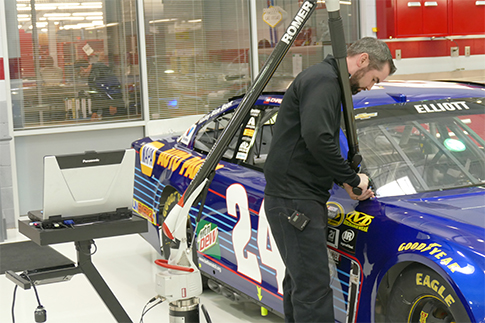Sponsored Content
For more than 30 years, Hendrick Motorsports has consistently been one of NASCAR’s most successful teams. In the course of winning a record 11 Sprint Cup Series championships, Hendrick Motorsports has learned that it must innovate constantly to stay ahead of the competition. Because auto racing is a sport that rewards risk takers and innovators, the engineering team needed to adopt a more flexible and nimble culture to find the speed needed to win on race day.
|
ADVERTISEMENT |
When faced with technological hurdles, this culture encourages engineers to ask, “Why not?” rather than say, “We can’t.” One of the ways that Hendrick Motorsports does this is by using intelligent measurement technology to go fast on the track.
…

Add new comment